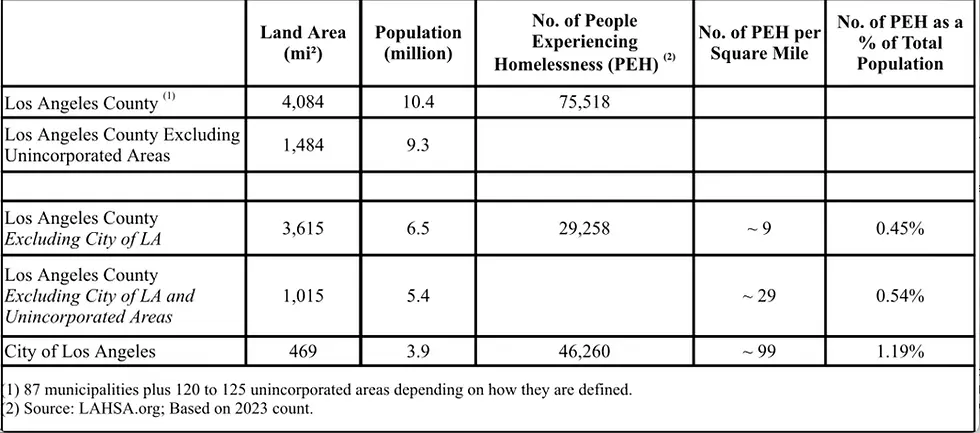OPINION: LA Is the Go-To Destination for Transients: Just Ask Burbank PD
- debbievanness143
- Jun 26, 2024
- 3 min read
The reactions were swift. The City Council reacted in disbelief and demanded answers. Council president Paul Krekorian was outraged.
For a long time, we've known that LA disproportionately bears the weight of encampments because smaller communities in LA County are more effective at pushing transients and the unhoused into City of LA boundaries. This was on full display at the Globe encampment on Venice Blvd, under the FWY 405 underpass. For the better part of its existence, there was not a single tent on the south side, which was considered within the boundaries of Culver City. The Los Angeles side on the north side of the street was continuously occupied by one of the largest encampments on the Westside.
This stark contrast highlights a systemic issue. Drive around the other 87 municipalities and 120-125 unincorporated areas in LA County outside of City of LA boundaries, and you don't see as many encampments and RVs occupying public streets as boundaries of City of LA. Why? Because these areas have policies and enforcement strategies that effectively deter such occurrences by pushing transients or encampments into the City of LA. In fact, while the City of LA has 40% of LA County population and 10% of its land area, it is estimated to have 60% of the total number of people experiencing homelessness by LAHSA.
Take the recent attempt by Councilwoman Katy Yaroslavsky to reform 41.18, or Supervisor Lindsey Horvath calling 41.18, the only legal avenue the City of LA has to fight against unruly encampments near sensitive areas such as parks, libraries, daycares, etc., “a failed policy”. These efforts, while good intentioned, undermine the City's ability to manage encampments effectively, sending a signal to LA County municipalities – and frankly the rest of the country – that Los Angeles is a haven for transients and campers.
So, while we can be outraged by Burbank PD's behavior for providing a free ride for an individual to the City of LA, let's not forget that this incident is the direct outcome of policies that promoted the protection of encampments above the protection of encampment-free neighborhoods. The City Council should reflect on this incident and recognize that the solution lies in the hands of policymakers to get tougher on encampments and RVs by removing incentives for people to camp in Los Angeles. Enforcing anti-encampment laws, or at least not weakening them, is essential.
We can hear critics screaming, "but housing first," "that's criminalizing poverty," "mental health is the issue."
Let's address those criticisms:
First, City of LA sits on at least 1,200 empty units and chronically overpays for units without accountability, so that's not the issue. The inefficiencies and mismanagement in housing allocation are where the real problem lies.
Second, compelling individuals to take shelter when streets are far more dangerous is not criminalizing poverty. It's what sound public safety is all about. The streets are hazardous for vulnerable unhoused and any protection provided even by shelters can mean saving lives.
Lastly, Supervisor Lindsey Horvath inexplicably postponed the implementation of California’s new mental health law in LA County; meanwhile, municipalities under her reign happily push people into City of LA boundaries without many consequences. This delay exacerbates mental health crises and shifts the burden onto LA.
So, while the City Council's outrage is warranted, their energy would be better spent reducing other cities' incentives to push their unhoused into LA boundaries. Strengthen the anti-encampment laws. Start by not weakening but strengthening 41.18, which has been an effective tool in making West LA the vibrant community it once was.
Arya Rahimian

.png)

Comments